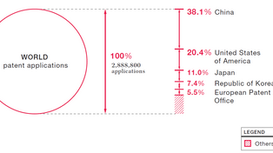What are the first-to-file andfirst-to-invent rules?
- Admin

- May 10, 2023
- 1 min read

To obtain a patent, an application must be submitted to a government agency, typically a patent office. In situations where multiple applicants apply for a patent for the same invention, there arises a need to determine who should be awarded the patent since only one patent can protect the same invention. Two approaches have been historically employed by various countries: the first-to-invent system and the first-to-file system. Initially, countries such as Canada, the Philippines, and the U.S. adopted the first-to-invent system, but all of them have now shifted to the first-to-file system.
Although granting a patent to the first inventor seems to be the most sensible approach in line with the fundamental principle of the patent system, the first-to-invent system has several disadvantages. Firstly, inventors must keep all evidence of the time spent on the invention and provide witnesses, which can be both time-consuming and costly. Secondly, inventors often choose to keep their inventions confidential for an extended period since it does not matter if they apply at a later stage. Thirdly, patentees of inventions may feel uncertain and hesitate to develop their inventions due to the risk of infringing on an earlier invention.






































Comments